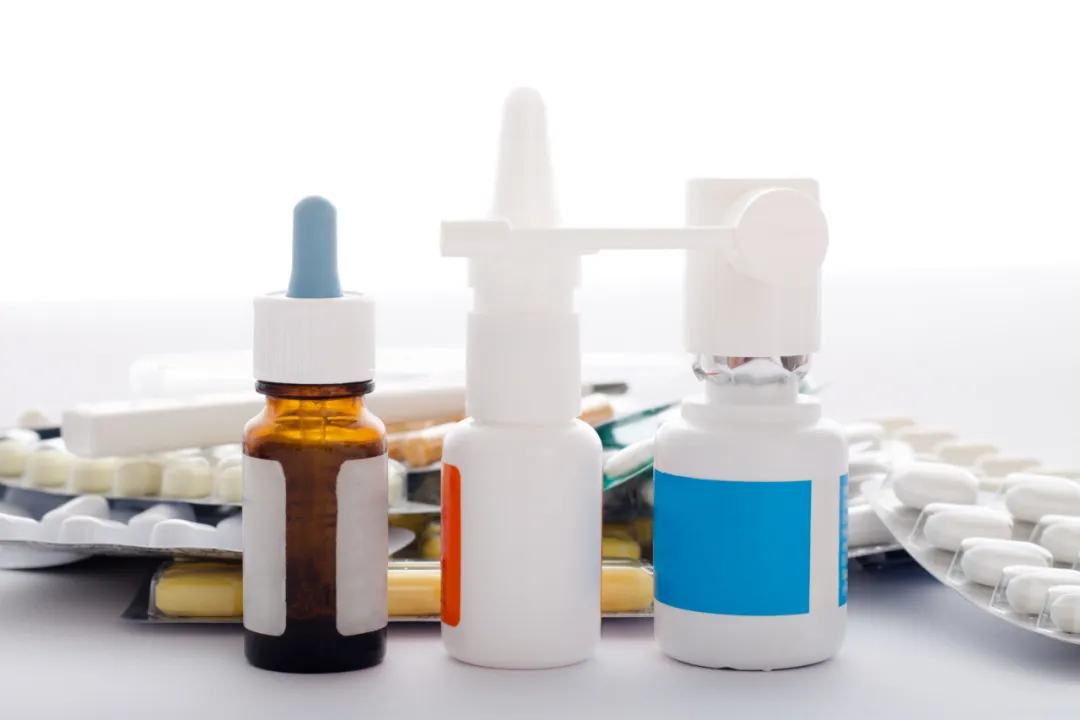"One spray, instant relief—like unblocking your nose’s meridians!" While browsing online for sinusitis remedies, Xiaocheng stumbled upon a highly praised post and impulsively ordered an imported nasal spray. The effect was miraculous—long-lost free breathing felt like a treasure. She began using it at every hint of discomfort.
Five years later, the small bottle became a lifeline. Xiaocheng found herself needing to spray every two hours. Without it, congestion surged back with vengeance, causing breathlessness, dizziness, and heart palpitations.
Her doctor delivered grim news:
"The nasal blood vessels have completely lost their elasticity. Surgery may be needed to rebuild nasal function."
How did a simple attempt at self-treatment spiral into a life-threatening crisis? The so-called "miracle spray" drags users into an addictive breathing trap.
 The Truth About "Miracle Sprays": Vasoconstrictor Nasal Sprays
The Truth About "Miracle Sprays": Vasoconstrictor Nasal Sprays
Many over-the-counter nasal sprays are
vasoconstrictors (decongestants). They stimulate receptors on nasal blood vessels, causing rapid constriction to reduce swelling and congestion.
In clinics, patients often pull out various sprays—imported, domestic, medical, or non-medical. Most are vasoconstrictors at their core.
Image from internet, removed upon request.
For rhinitis sufferers, nasal corticosteroids are the gold standard. They control inflammation at its source with proven safety and long-term efficacy but take days to work. In contrast, vasoconstrictors offer instant relief—swollen mucosa shrinks, breathing clears—a sensation so addictive it’s irresistible.
Yet, this "breathing euphoria" leads straight to dependency.
1. The Eroded Nasal Defense
Nasal mucosa, the respiratory system’s first barrier, uses cilia and mucus to filter dust, viruses, and maintain moisture. Long-term vasoconstrictor use destroys this shield, causing
cilia loss,
gland atrophy, and impaired self-cleaning.
Over time, nasal vessels grow desensitized. The spray’s effects shorten, forcing users to spray hourly—or even every 10 minutes—trapping them in a "spray-block-spray" cycle.
2. The Underestimated Dependency Trap
Quitting triggers
rebound congestion: nasal blockage worsens as drug-dependent vessels lose self-regulation. Chronic irritation damages mucosa, raising risks of
rhinitis medicamentosa.
What is Rhinitis Medicamentosa?
Also called "rebound" or "toxic" rhinitis, it’s a chronic inflammation caused by long-term vasoconstrictor abuse. Symptoms include persistent nasal congestion and dryness.
Worse, prolonged use dulls nasal response to steroids or antihistamines, leaving patients "untreatable."
3. Cardiovascular Risks
Vasoconstrictors don’t stop at the nose. Absorbed systemically, they trigger
vasoconstriction, spiking blood pressure and heart rate. For hypertension or coronary patients, this risks
angina,
heart attacks, or
strokes. Even healthy users face accelerated atherosclerosis.
"But Why Do Doctors Prescribe Vasoconstrictors?"
In acute cases (e.g., severe congestion), doctors may prescribe short-term use with strict rules:
Limit to 2-3 doses daily.
Never exceed 7 days.
Pair with follow-up treatments.
Self-medication lacks professional oversight—users can’t safely adjust doses or transition therapies.
"Doctor, Can I Still Be Saved?!"
Yes.
Stop the spray immediately. Initial withdrawal worsens congestion—a sign of healing as mucosa regains function.
Short-term users (<1 year): Under medical guidance, taper usage while switching to nasal steroids.
Long-term users: Surgery may be needed for advanced rhinitis medicamentosa.
Seeking Relief in the Darkness of Rhinitis
The craving for "instant cures" leads to addictive traps.
Brief comfort breeds lasting suffering.
Nasal health demands patience and professional care.
True healing lies in science, not shortcuts.
